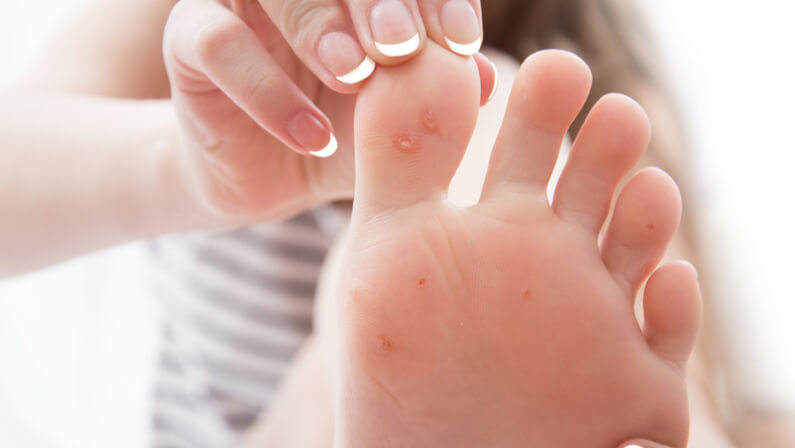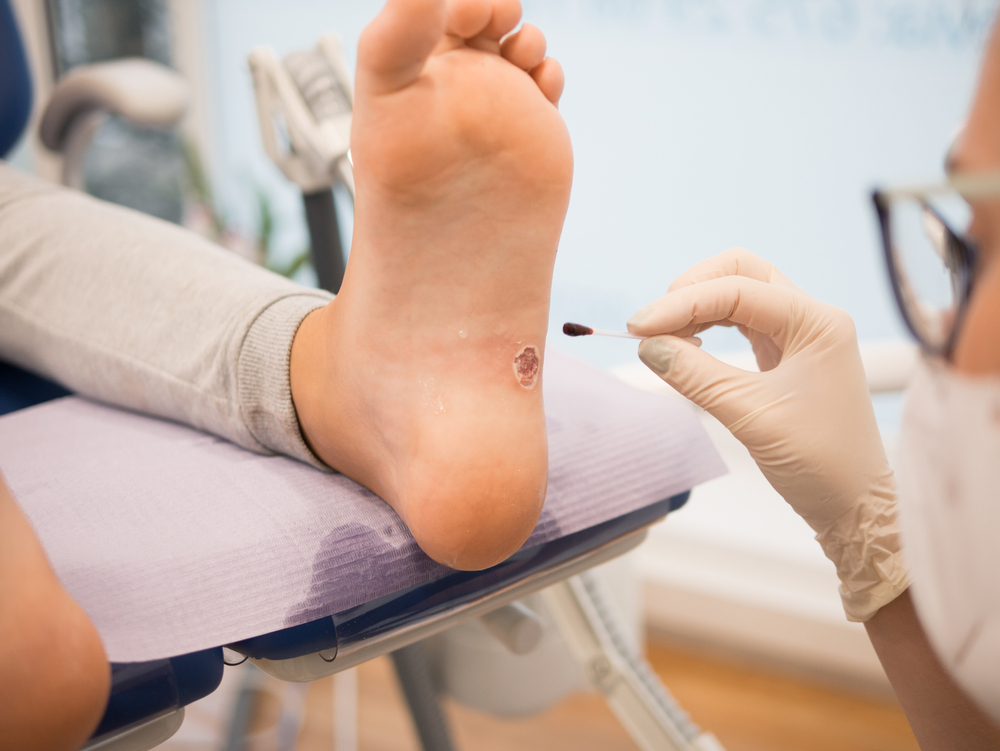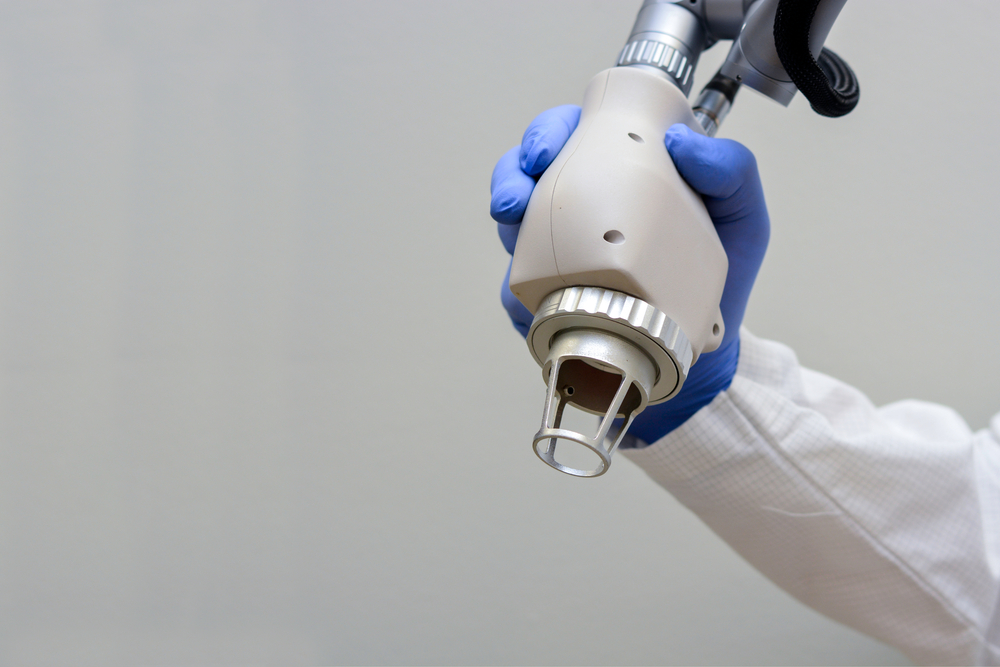Warts on the feet tend to appear out of nowhere. Everything may seem just fine until you detect rough, gritty spots and bumps on your foot’s bottom.
If your kid has them, they may have approached you to inquire about them or may have tried to hide them from you.
In any case, one of your main concerns could be: “Are plantar warts contagious?”
A straightforward answer is YES, but it is critical to investigate first all the facts before you panic.
It’s important to know what you’re dealing with if you want to know how to treat plantar warts (also known as foot warts).
After that, we’ll tell you some of the most recent treatments to eradicate them.
Here’s what you need to know!
Table of Contents
1. What are plantar warts?

Plantar warts are non-cancerous viral infections that develop on the bottom of one’s foot. They are a nasty and irritating skin condition that usually affects the heel of the foot.
It looks like a small, swollen area with minuscule black dots in the center, and it can cause considerable pain when walking.
Warts typically spread outward from the skin, however, this one grows inward due to the pressure on the heel from walking all day. The human papillomavirus (HPV) is known to cause plantar warts.
2. How contagious are plantar warts?
Plantar warts are highly contagious. They can be transmitted easily from one person to another by coming into direct contact with a contaminated object, such as a locker room floor or a towel.
People with cuts or open sores on their feet and those with compromised immune systems are more likely to develop plantar warts.
Plantar warts are most common in children between the ages of 12 and 16. They can, however, affect persons of all ages.
This virus develops in warm, moist conditions like locker rooms, pools, and surrounding places. It may enter the body through tiny gaps in the skin of the heel area.
Although most plantar warts fade away in about two years without treatment, they can irritate the skin, cause slight pain, and be ugly.
3. What are the signs and symptoms?
Plantar warts can be found in a variety of shapes and sizes. It could be a smooth bump or a bump with a rough surface.
A wart usually is painless, but it can be unpleasant if it grows on a finger or on the bottom of the foot, where pressure is exerted.
4. How to prevent plantar warts?
Wearing suitable shoes in public bathing facilities and not sharing towels, shoes, or socks are measures that may be taken to prevent this virus from affecting the body.
5. When should you see a doctor?

If you believe you have developed this condition, you should consult a podiatrist to explore treatment options.
Treatment is not simple or quick. Hand wart therapy at home, for example, might take anything from a few weeks to a few months.
Most of the wart is below the skin’s surface, foot warts are difficult to treat. The wart can recur even if treatment is successful.
Doctors advise that if a wart is not troublesome, it can be left alone. The immune system may help the wart vanish on its own over time. If self-care hasn’t worked for you, talk to your doctor about various treatment options.
6. What is the best way to manage or treat warts?
Plantar warts are typically harmless, however, it may take a year or two for them to disappear on their own.
If your warts are bothersome or persistent, try using non-prescription drugs or home remedies. Warts may take several treatments to disappear, and they may reappear later.
You may have read ways to remove Plantar Warts at home, however many of these at home remedies are scams and can actually be harmful. Please call us or schedule a consultation right on our website to meet with our team and find out the best treatment for your Plantar Warts.
Some of the treatment options are as follows:
Chemical Remediation
There are a variety of topical acids available. The majority of the time, salicylic acids of various strengths are administered directly to the wart daily.
The success of this treatment is entirely contingent on patient cooperation and thorough lesion debridement.
Weekly debridements by a professional are recommended. For acid applications to continue to work, all dead skin must be removed.
Laser Treatment

A variety of laser treatments are being developed and used. Here are a few more such examples.
CO2 laser
Cutting around the lesion will allow the wart to be completely removed while the blood vessels are cauterized.
The lesion will be vaporized, and a slight burn or blister will result from defocusing the laser or generating little streaks with the laser over the body of the wart.
This will cause the body to produce an immunological reaction, which will aid in healing the wart from the inside out.
Needling
This procedure requires a needle to puncture the lesion repeatedly. A cortisone injection frequently follows this into the wart.
Hyfrecation
Hyfrecating a wart uses an electric needle. At some levels, the lesion will evaporate, whereas, at higher settings, it will burn. It can be utilized as a cutting instrument.
Cryogenic Treatment
In this method, liquid nitrogen is applied directly to the wart with a probe or applicator. It will cause a burn and may leave a scar.
Blunt dissection
This is a surgical procedure that involves cutting around the lesion. It may use a punch biopsy technique – a process in which a little round piece of tissue around the size of a pencil eraser is extracted using a pointed, hollow, circular device. It requires local anesthesia.
Pulsed Dye Laser
This is a newer technique with a success rate of up to 95%. The device sends out a brief yet intense pulse of light, which is absorbed by the pigment in the wart’s red blood cells.
Light is produced when the lasing solution, a concentrated pigment, is activated by a flash lamp energy source. A pen-like handpiece is then used to guide the light at the wart.
The wart’s blood flow is cut off due to the light being absorbed by the wart’s cells. In most cases, no anesthesia is required, which means no uncomfortable injections before treatment.
Furthermore, because the skin surface is not broken, there is no risk of scarring or infection.
Warts are treatable, not curable
As is frequently the case with viral infections, once you develop plantar warts, they are permanent. They will return even after you remove them.
However, you do not have to live with the discomfort and embarrassment of warts or wait years for them to disappear naturally.
At Team Dermatology, our professionals use a variety of procedures to eliminate warts. To schedule an appointment, click here.

